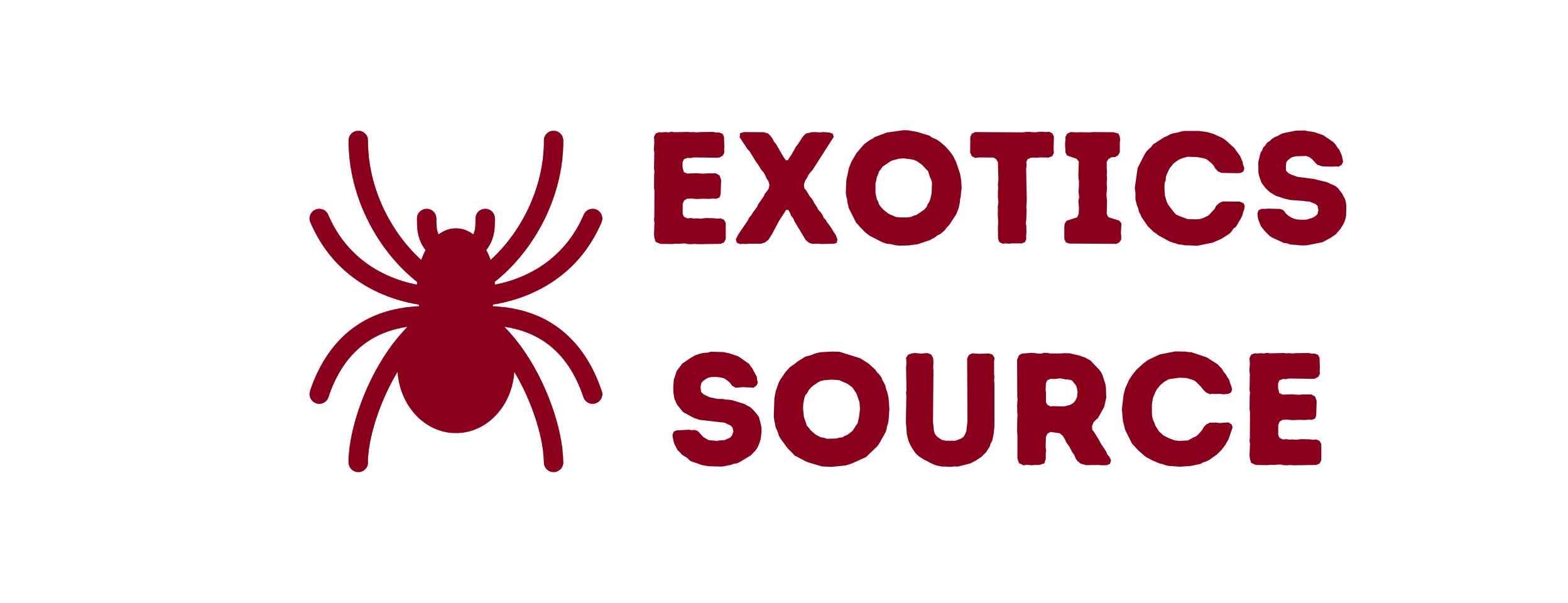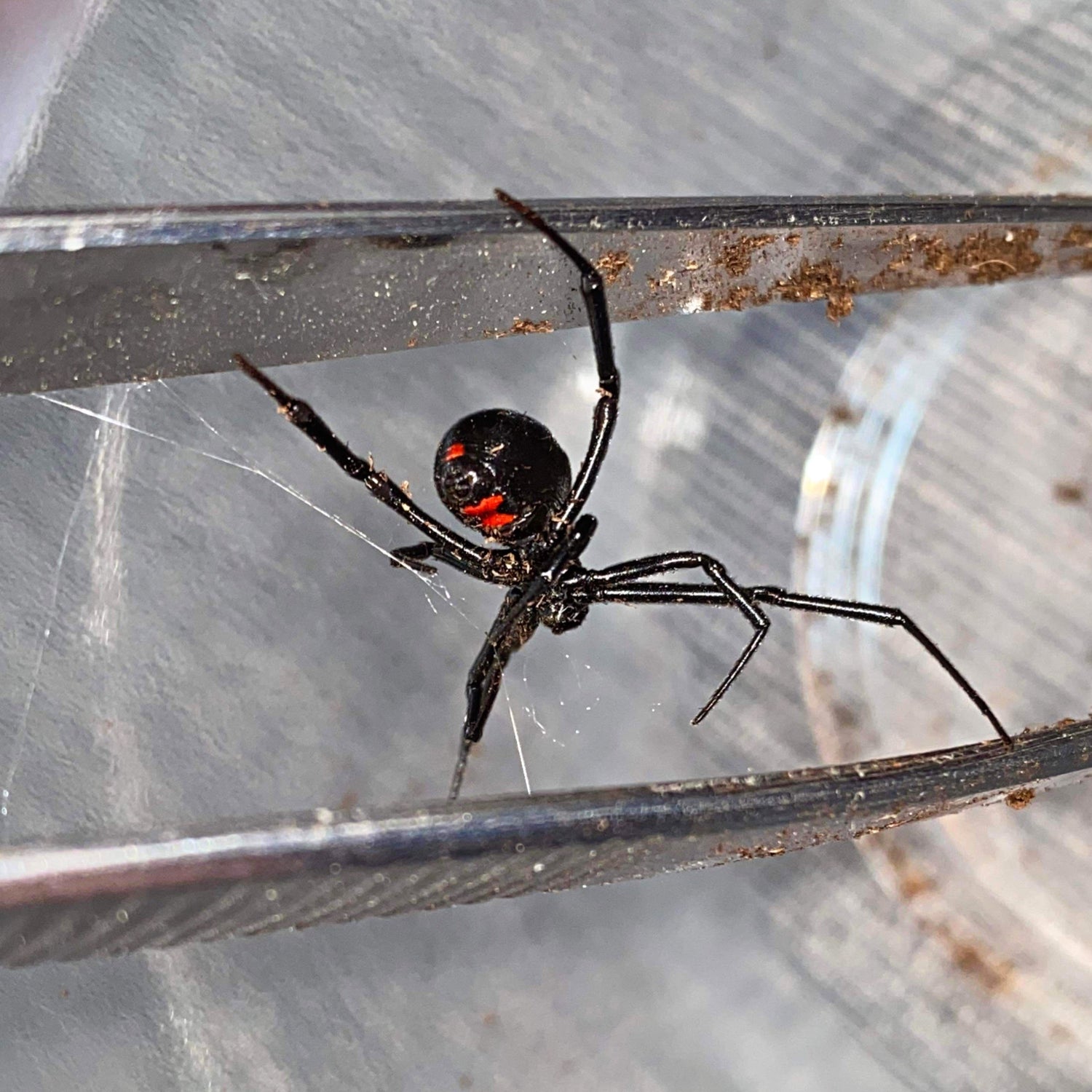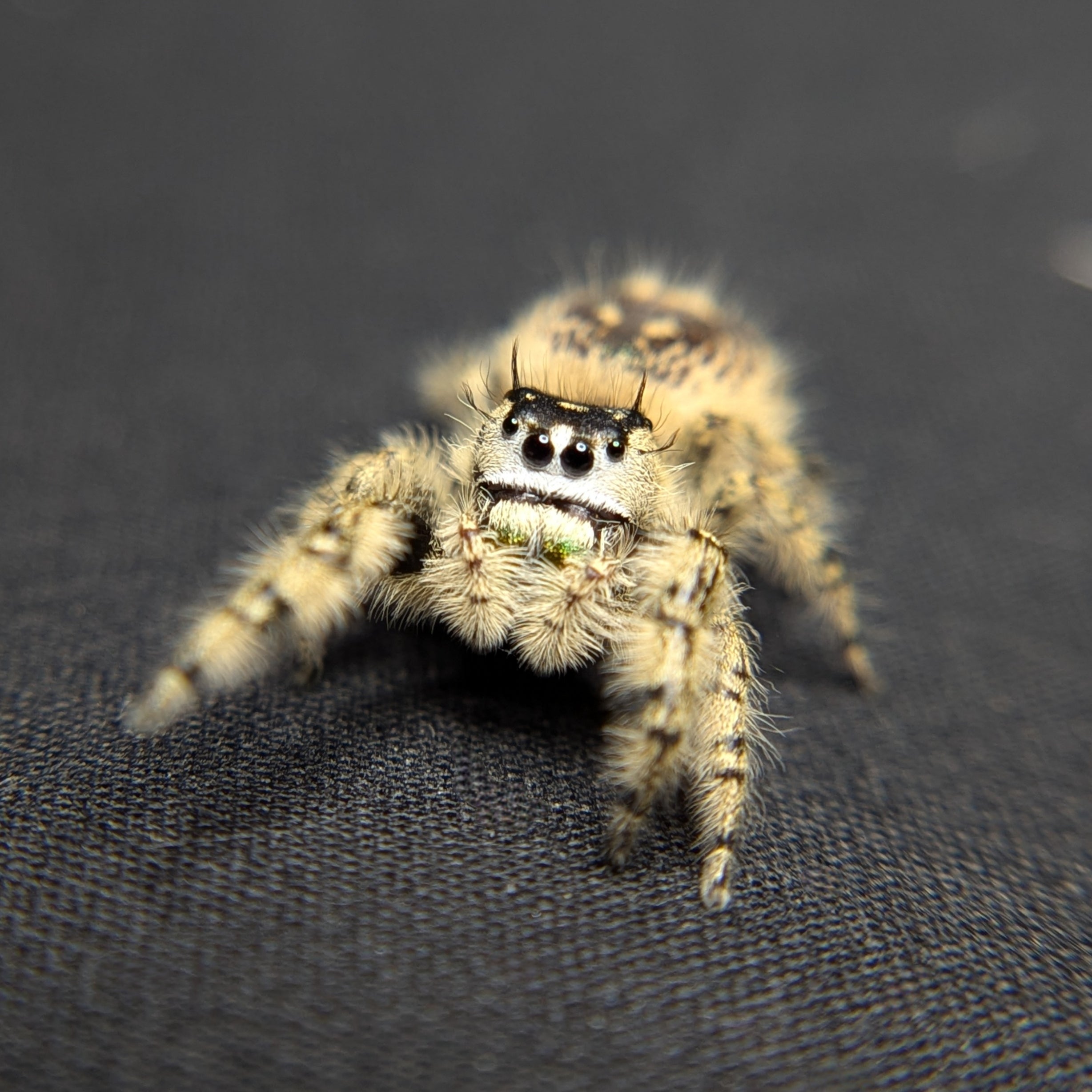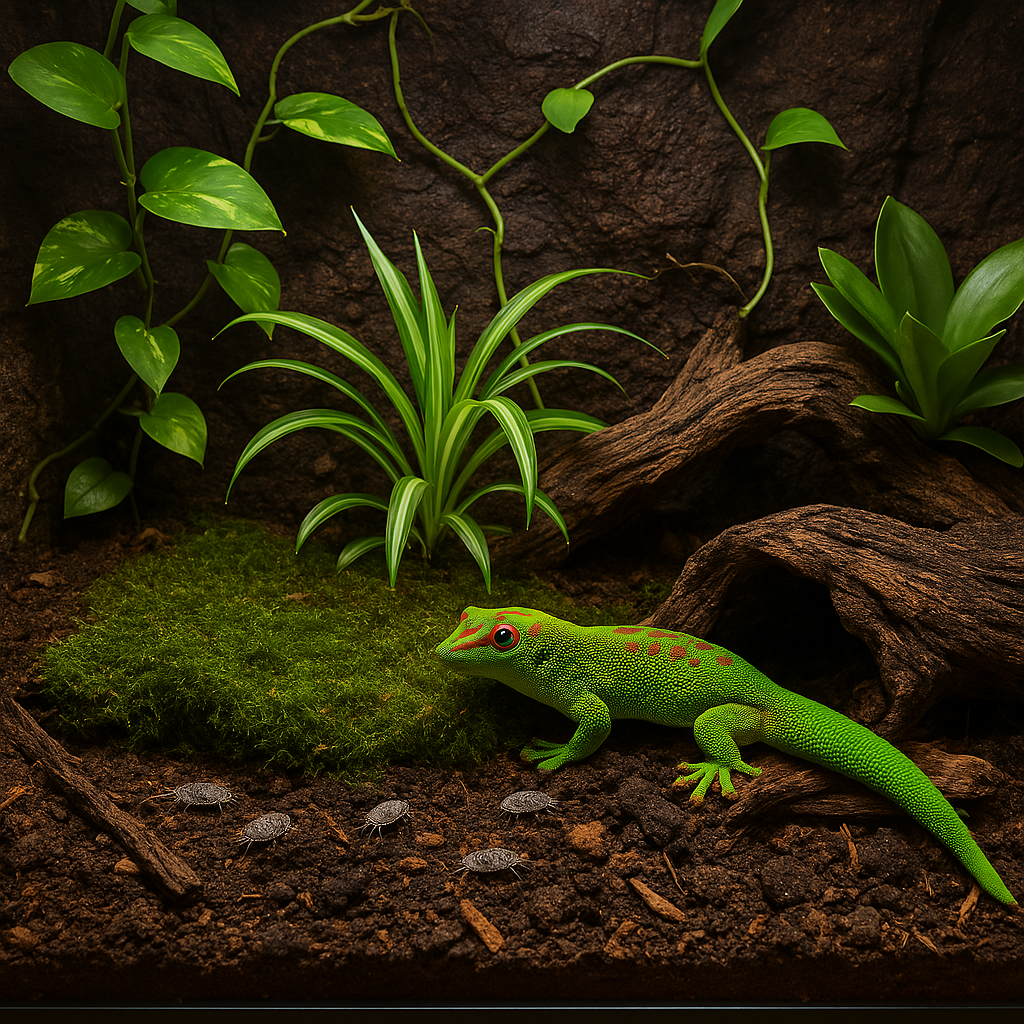Introduction
Latrodectus mactans, commonly known as the Southern Black Widow, is a highly recognizable spider species known for its glossy black body and red hourglass marking on the abdomen. Native to the southeastern United States and other parts of North and Central America, black widows are infamous for their venom, though bites are rarely fatal to healthy humans. These spiders are shy, secretive, and often misunderstood. With proper respect and handling precautions, they can be safely kept and observed in captivity by experienced hobbyists.

Enclosure Setup
Black widows require a secure and escape-proof enclosure due to their venomous nature. A plastic or acrylic container measuring around 8x8x10 inches is sufficient for a single adult. Vertical space is important as they build irregular webs in corners and crevices. Include anchor points like sticks, cork bark, artificial foliage, or mesh to encourage web-building.
Substrate is optional, as they rarely walk on the ground, but a thin layer of dry coconut fiber or paper towel can be used for cleanliness. Maintain room temperature between 70-80°F with no supplemental heating required unless temperatures drop significantly. Humidity should be kept between 40-60%. Avoid overly humid environments, as excess moisture can lead to mold and stress. Light misting once every 7–10 days is enough, and always ensure the enclosure has proper ventilation.
Diet
Black widows feed primarily on live, appropriately sized insects. Ideal prey includes small crickets, roaches, fruit flies (for juveniles), and the occasional mealworm or waxworm. Adults should be fed once per week, while juveniles can be fed twice per week. They are ambush predators, waiting for prey to wander into their web rather than chasing it.
Offer only one prey item at a time, and remove any uneaten insects within 24 hours. Overfeeding or leaving prey in the enclosure can stress the spider or lead to molting complications.
Shedding and Growth
Like other spiders, Latrodectus mactans grows through molting. During pre-molt, they may stop eating, become less active, and remain in a secluded part of their web. Avoid feeding and disturbing them during this time. After molting, wait several days before offering food to allow their new exoskeleton to harden.
Black widows go through several instars before reaching adulthood. Males mature faster and have shorter lifespans, often only living 6-8 months. Females can live up to 2-3 years in captivity.
Female-Specific Care
Adult females are significantly larger than males and are the ones typically associated with the iconic red hourglass marking. They are web-dominant and rarely leave their retreat once established. A mature female may produce multiple egg sacs over time, even without mating. Each sac can contain hundreds of spiderlings.
To prevent unwanted reproduction, ensure your spider has not recently mated or avoid pairing altogether. If an egg sac is produced, remove and freeze it immediately to prevent hatching. Female black widows may become more defensive when guarding an egg sac.
Handling and Temperament
Black widows are not aggressive and prefer to retreat when threatened. However, due to their medically significant venom, direct handling is strongly discouraged. Use long tools, forceps, or paintbrushes when working in the enclosure. Always secure the enclosure with a locking or tight-fitting lid. If cleaning or moving is needed, transfer the spider to a temporary container using non-contact methods.

Health and Maintenance
Black widows are hardy and low-maintenance spiders. Spot-clean the enclosure every few weeks by removing leftover prey and webbing buildup. A full clean is rarely necessary but can be done every 6-12 months. Replace any moldy or deteriorated decor. Provide clean, dechlorinated water droplets by misting or adding a small piece of moist cotton or sponge temporarily.
Monitor for signs of distress such as frequent climbing, restlessness, refusal to eat for extended periods, or unusually curled legs. These may indicate environmental issues or aging.
Conclusion
Latrodectus mactans is a fascinating and iconic spider species best suited for careful, informed keepers. While potentially dangerous, their calm behavior and low activity levels make them safe to observe when housed securely. With the right setup, respect for their venom, and consistent care, black widows can be an educational and captivating addition to a serious arachnid collection




Leave a comment
This site is protected by hCaptcha and the hCaptcha Privacy Policy and Terms of Service apply.